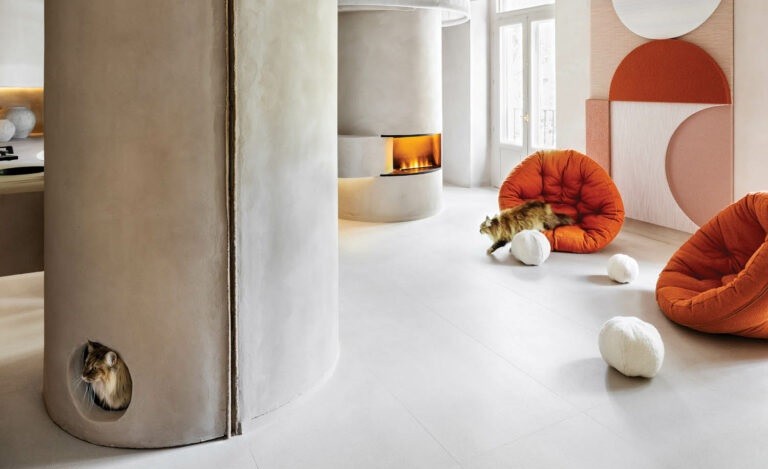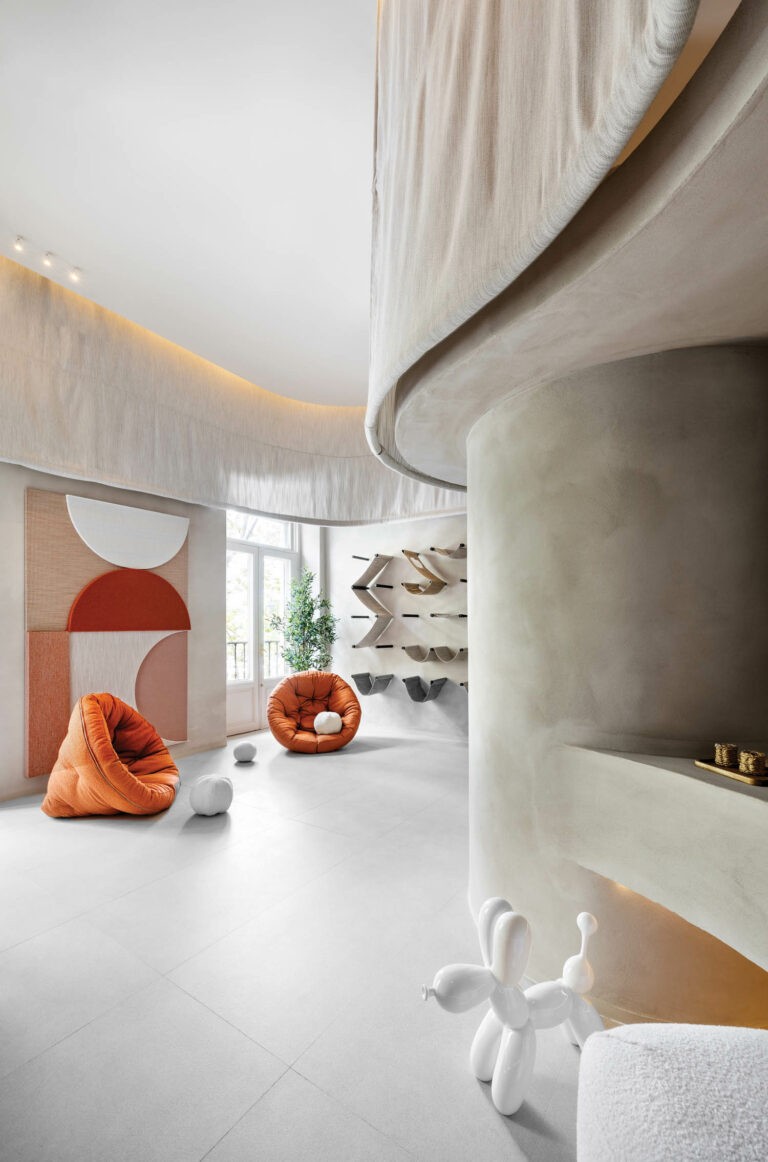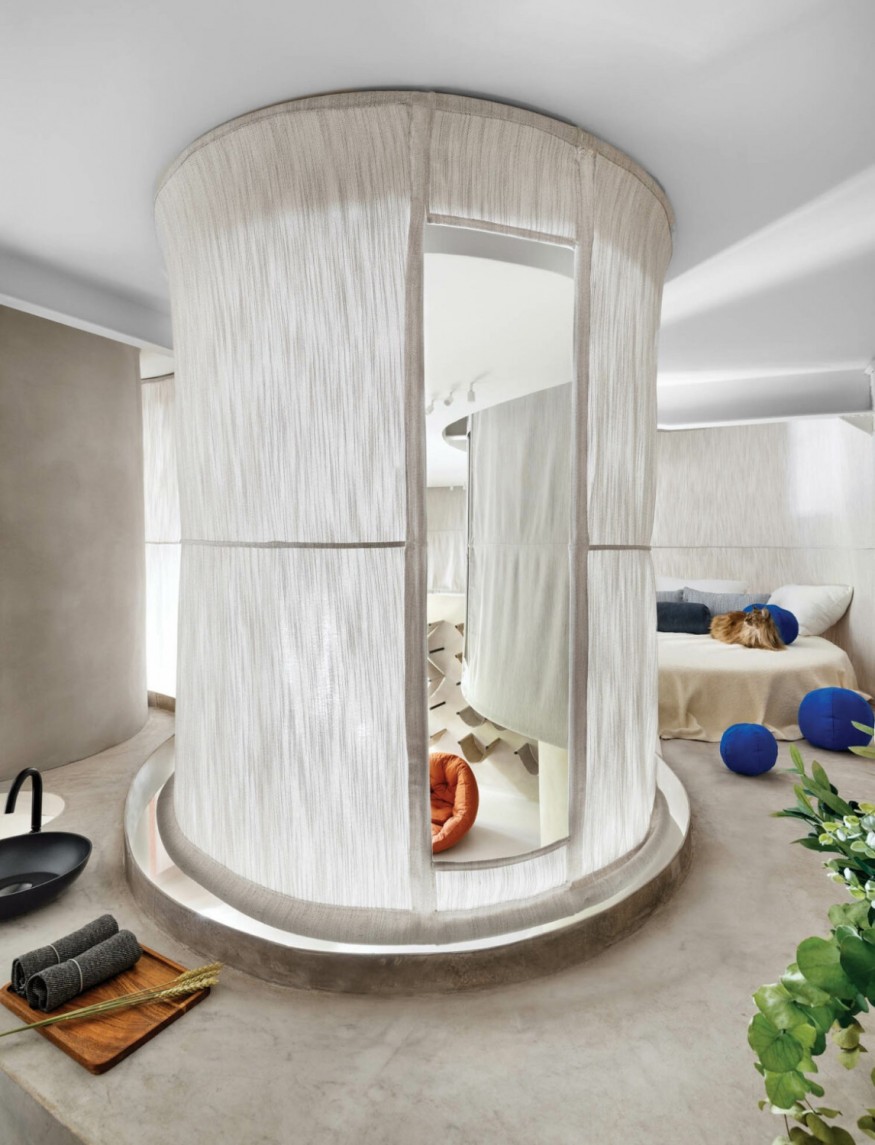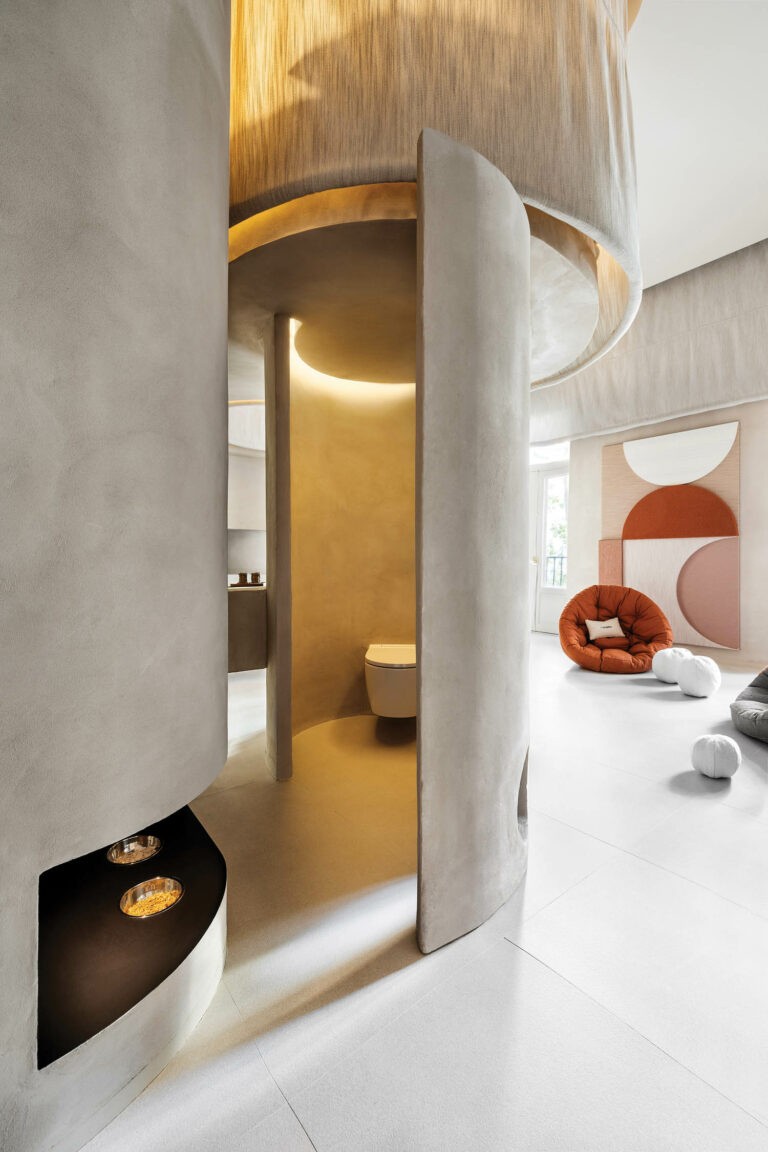Madrid Show House Redefines Living Spaces for People and Pets, Prioritizing Well-Being and Harmony

In a groundbreaking display of architectural ingenuity, Spanish architect Héctor Ruiz Velázquez has redefined the concept of living spaces, creating a harmonious abode for a family of two species: a human, a cat, and a dog. Featured in the Casa Décor Madrid show house, this compact apartment challenges traditional interior design norms by prioritizing the well-being of inhabitants and their pets. Collaborating with Ecoplen, a Spanish company specializing in smart textiles, Velázquez embarked on a mission to craft a space that embodies health, harmony, and a deep connection with nature.
The visionary project began with the notion of equality, challenging the typical categorization of spaces into essentials and accessories. Studio Ruiz Velázquez aimed to eliminate restrictive design boundaries, ensuring that every inch of the 290-square-foot, two-level studio was accessible and inviting to humans and their furry companions. While the showhouse's site was specific, the adaptable components showcased the potential for reconfiguration within different environments.

Nature-Inspired Design
Inspired by the beauty of trees and living beings, Velázquez conceptualized the apartment as a grove of two trees with cylindrical trunks sheltering private spaces and supporting a lofted bedroom in their undulating canopy. This design choice reflects a commitment to using natural materials and forms from their environment. The curved walls, structural cylinders, and kitchen feature Ecoclay, a natural clay-based material, while the ground-level flooring boasts an antibacterial ceramic tile designed by Velázquez himself. The result is a space that exudes a calming atmosphere and promotes a healthy, 360-degree healing environment.

Innovative Textiles and Materials
The apartment's fabric components, including the "tree canopy" made of Ecoplen, serve multiple purposes. Not only are they self-cleaning and stain-resistant, they are also treated with virus-killing biocides and mineral-based photocatalyst natural antimicrobials activated by sunlight, actively purifying the interior. The moveable furniture, custom-upholstered in the same self-cleaning fabric, is designed for use by humans and pets, ensuring a seamless blend of functionality and aesthetics.

Pet-Friendly Features
Understanding the importance of pet enrichment, the design elevates private areas to free up the main floor for play, gathering, cooking, and eating. The shower, set within one of the cylindrical trunks, features separate fittings for humans and dogs, reflecting the thoughtful consideration of every occupant's needs. A cat scratch-and-climbing pole runs vertically through the residence, connecting different levels and providing stimulation and exploration nooks. Custom round beds and cushions offer comfort in the loft bedroom, which is accessible to all residents.
Maintaining visual connections between all common areas was a priority for Studio Ruiz Velázquez. Strategic openings in the trunks and canopy ensure that both animals and humans have continuous visual contact, promoting safety and peace of mind. The apartment, bathed in daylight, resembles a cave thanks to its thermal properties and earth-toned clay finishes, creating a cozy and inviting atmosphere.
A Larger Scope
Ruiz Velázquez emphasizes that this project transcends mere architecture; it represents the purest connection of life on the planet, where animals and humans coexist with shared leadership and equal priority in functional design. Atenzza Group's CEO, Francisco Pérez, who shares the same pets as the show-house inhabitants, has embraced this philosophy by reinstalling elements of the show house in his apartment, further validating the profound impact of this biophilic haven.
The Madrid Show House, designed by Héctor Ruiz Velázquez, stands as a testament to the transformative power of architecture when driven by a commitment to well-being, equality, and a deep connection with nature. This biological reserve challenges conventional design conventions and sets a new standard in creating environments that prioritize human and animal health. Initiatives like these require us to reconsider our relationship with our environments and the other creatures that share them in pursuit of a more compassionate and sustainable future.














